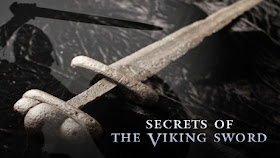If you want to add an extra dimension to your roleplaying, consider your character's views on the divine.
The Gods Are Real
 |
| And they will give you things, if you ask properly. |
So, the gods are real.
Take a moment and contemplate that for a moment. Think of a world where there was no question on the existence of gods. A world in which the gods and their servants could be seen, heard, felt, and where there was a better than even chance their mortal mouth-pieces were in fact giving the masses the straight dope on the divine. A world where the pious could perform miracles, where infernal and angelic bloodlines manifested in the populace, and where there was no possibility of it all being smoke and mirrors as a salve on troubled souls.
That's the kind of world your character exists in.
What Sort of Faith Did Your Character Grow Up In?
 |
| We do not smile in the graveyard. Pharasma will make our faces stick that way if we do. |
So ask yourself what faith or faiths your character grew up with. Was he raised in an orphanage run by clerics of Asmodeus who taught about the contracts of society, and who instilled values of cleverness and power? Perhaps she was brought up in the country, and her father taught her all about nature, and how Erastil had given them a responsibility to support each other and to never take more than they need to live? Maybe your character was raised by wizards, who considered the divine a problem to be solved rather than an idea to be worshiped and followed?
Whatever your unique upbringing was, ask what bits of faith held tight and which fell by the wayside. Maybe it's the curses your character uses, the taboos she avoids, or something even deeper.
How Do You Pray?
 |
| Put on your knee pads girls, we're going to be here a while. |
If you do this you're passing up a huge roleplaying opportunity.
Yes, the mechanical effects of praying for spells don't change from one cleric to another. Every cleric spends an hour at prayer, and as a result said cleric gets a certain number of spells for the day. But what does it look like?
Does a cleric of Gorum passively kneel and pray, or does he clean his armor and weapons to a mirror shine as he recites the tenets of the god of battle? Or does he stand without armor, in just a loincloth with naked steel in hand as he goes through combat forms that represent different spells? Does a cleric of Shelyn create art while praying, or does the cleric play music or dance as a way to create something beautiful as an offering? Does a cleric of Zon Kuthon cut herself, or run needles through her skin in certain patterns to get closer to the god of agony? Do the prayers change over time? Are more elaborate rituals required for those who are higher in power, which explains why they're granted more powerful magic?
This isn't just for clerics either. Any character who worships a god should have little rituals that make them more unique. Barbarians might offer a prayer at the beginning or end of a hunt to commemorate the activity. Rangers who track and kill undead might carve Pharasma's spiral on their arrowheads out of a totemic belief that they'll draw the restless dead home. Fighters who worship Cayden Cailean might offer the first toast to him after a successful adventure in thanks, or before embarking as a prayer for good luck.
When the gods could quite literally be on your side, it's important to make sure they know you're listening.
Monsters and Faith
 |
| Sixth level of the Abyss, how can we help you? |
For some races the connection to the gods is even stronger. Tieflings and aasimar are the first that come to mind, but geniekin and others with the blood of powerful outsiders running through their veins are also important candidates for deeper questions. For instance, does a tiefling believe that he's damned simply because of his heritage? Could a lifetime of prejudice and scorn lead him to snap, deciding that he'll commit such atrocities that when he does go to hell they'll make him a duke for his troubles? Does an aasimar regard divine parentage as something more like an extended family than a god, leading them to treat those they're descended from with greater familiarity and less awe than they might otherwise command?
These are good questions to start with. How you answer them will depend on the kind of character you want to make.
As always thanks for dropping by Improved Initiative. You can follow us on Tumblr, Facebook, or you can plug your address into the box on the top right to get our updates. If you'd like to support this blog then drop your loose change into the "Bribe the DM" button, or check out our Patreon page and become a patron today!















